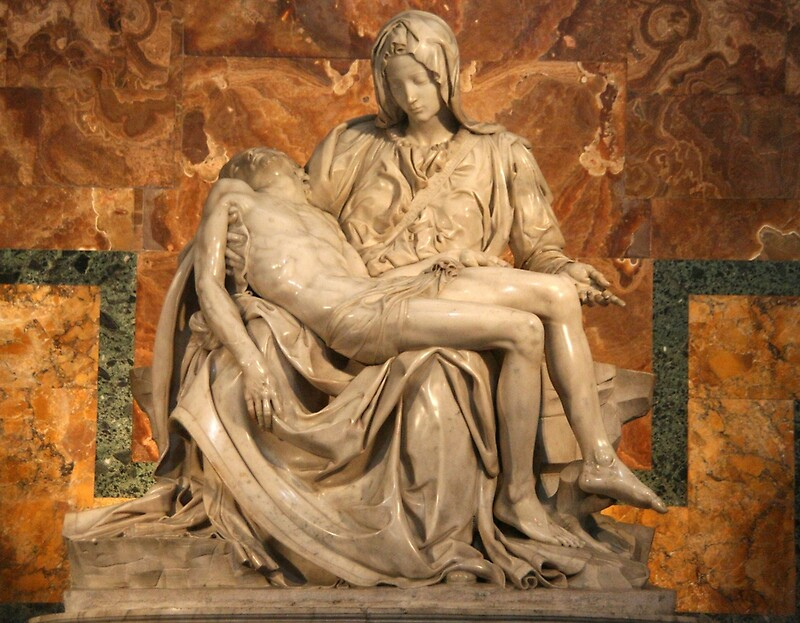Art Analysis - Module 2
The Pieta
The Pieta was sculpted by Michelangelo
Buonarroti in Italy during the late 15th century. Michelangelo began sculpting
in 1498 and when the piece was finished just one year later, it was placed in
St. Peters Basilica in Vatican City
Michelangelo’s The Pieta is beautiful masterpiece
depicting the biblical reference of Mary and Jesus following his crucifixion.
The detail in this piece arguably makes this Michelangelo’s best marble art
works. Starting from the bottom of the sculpture we see the immense detail of
Mary’s robes, it looks incredibly life like, as if we caught her just sitting
down and seeing all the natural movement of the fabric. The likeness of human
anatomy is breathtaking, especially in the portrayal of Jesus, Michelangelo was
able to capture the likeness of a thin man showing everything from his rib cage
to his wounded hand, to the veins and muscles in his feet. Theologically this
piece holds great symbolism to Catholicism. In traditional catholic paintings
and frescos there is a pyramid with the top point starting with God or an important
biblical figure to set the story or sometimes the hierarchy within the image.
This pertains to The Pieta as we see starting point is at the top of Mary’s
head, the next point at Jesus’s shoulder, and the last point at Mary’s right
hand, emphasizing the focal point which tells a story of her grief and
acceptance of her son's willingness to die for salvation
Although its commonly said The Pieta is pure beauty,
there are those who find controversy with its dimensions. For example, critics have
said that Mary looks to youthful, that it is a poor representation of women who
had a 31-year-old son. What are your thoughts?
One of my favorite facts about Michelangelo’s Pieta
is it’s the only work of art he had signed! It was said that he signed the piece
because he overheard viewers claim it was another artist who had created such a
masterpiece.
Bibliography
Columbia College. "The Pieta by Michelangelo
Buonarrot ." 26 September 2019. The Core Centennial College of
Columbia. Artical . 30 January 2023.
Gibson, Eric. "Michelangelo's "thinking
hand"." New Criterion (2020): 16-20. Article.
"Michelangelo's Pieta." n.d. Google
Images. Photo.





This sculpture is definitely breathtaking! I agree with you that the sculpture is incredibly detailed and it is truly amazing how sculptors can make marble works look so life-like! It is an ability that should be greatly appreciated. I also really like that you provided different picture perspectives of the sculpture so we can view it from various angles. It greatly aided me when I was examining the piece.
ReplyDeleteI believe that Buonarroti’s choice of form and medium was well thought out. The three-dimensional form allows the biblical representation to come alive by creating a realistic human portrayal. I also like his use of marble! When the light catches the sculpture, I feel as if it highlights the immense detail work present in the masterpiece. For example, my eyes instantly measured in on the detailing on Mary’s garments because the shine from the light accentuated it. Thank you for presenting this stunning sculpture!
I also love the Pieta, I still have not visited Italy but I really want to!
ReplyDeleteMy favorithe thing about it, is how it sorta resembles a heart shape when looked from the back. It is a piece full of symbolism and very careful composition.
Respecting mary looking too young...I am one of those people who like to think that it is Magdalene instead of his mother, it adds a little bit of romanticism to the scene.
Tamrit,
ReplyDeleteI think this is an impressive choice to do an analysis on. I think due to the imagery of the subject here, it tends to bring out emotion and is a difficult subject to talk about. However, I think there's a point to be made it the shapes and designs of this work are simply magnificent.